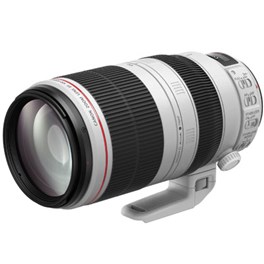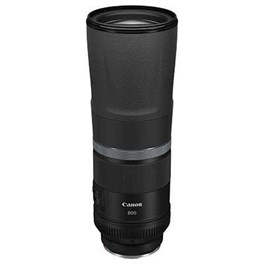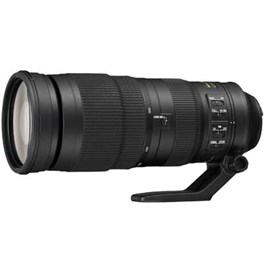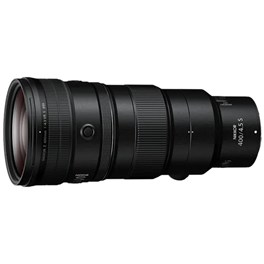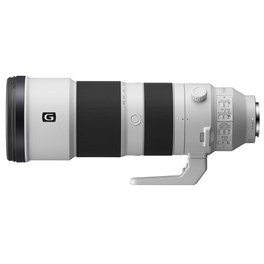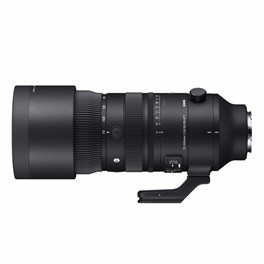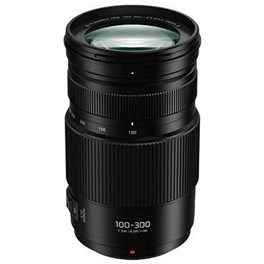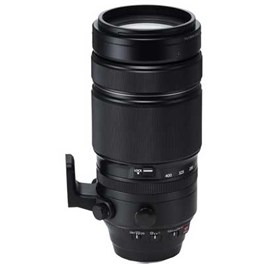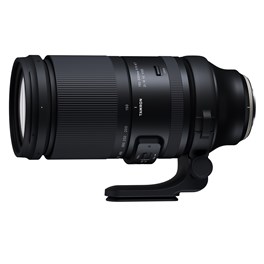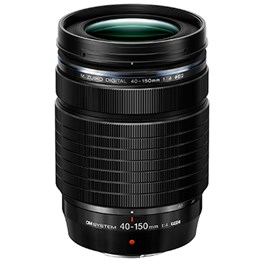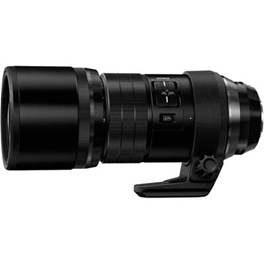
Once you’ve got the best lens for wildlife, you’ll have arguably the most important piece of kit for capturing stunning images of the natural world. Cameras with fast burst rates and deep buffers can certainly come in handy, but it’s ultimately the glass that makes the picture. A good lens will get you close enough to your wildlife subject to fill the frame with them, and if you’re building up a wildlife photography kit bag, getting this right should be your top priority.
We’ve put together this guide to help users of all the major digital camera systems find the right wildlife lens, so you can jump straight to the section for your particular camera system. If you’re wondering how we’ve chosen our lenses, here are the key criteria to keep in mind when selecting a good wildlife lens.
Focal length - When it comes to wildlife, you may think the longer the focal length the better, as a long lens allows you to get close to a subject. This is true to an extent, but not all wildlife subjects are alike – urban animals like foxes and seagulls will let you get much closer than rural ones like deer or badgers, for instance. A longer lens will add weight to your kit bag, so it’s worth thinking about how much focal length you realistically need.
Fast-focusing - Focusing is a game of two halves, with the camera and lens both playing their role. A good wildlife lens needs a capable focusing mechanism that will lock onto subjects quickly and accurately.
Zoom or prime? This is an age-old debate, so all we’ll say here is that both zooms and primes can be fantastic for wildlife photographers. Zooms give you the flexibility to tackle lots of different subjects in different situations, while primes give you unparalleled image quality and can often improve your discipline as a photographer by forcing you to think more carefully about positioning and framing. We’ve included both on this list.
Lastly, we’ve left out the ultra-professional wildlife lenses at the top of many manufacturers’ ranges. Canon and Nikon in particular produce some absolutely outstanding optics for the high-end wildlife user, like the Canon EF 600mm f4L IS III Lens or the Nikon 800mm f5.6E FL ED VR Lens. However, we’re going to assume that if you’re in the market for a £10,000-20,000 lens, you already have a good idea of what you’re looking for! So here, we’ve contemplated more broadly affordable lenses.
For more wildlife kit ideas, check out professional wildlife photographer Tom Mason’s ultimate kit bag on our blog.
Quick Navigation
Best Canon Lens for Wildlife
With Canon having been in the game for a long time, there are plenty of wildlife lenses for Canon users to choose from – more than we could exhaustively list here! However, these days, a “Canon user” can be someone invested in any one of three systems – Canon EF-mount DSLRs, the EOS R mirrorless series with RF-mount lenses, or the EOS M series and its dedicated line of EF-M lenses.
There’s a bit of crossover here, as the EF-EOS R Mount Adapter means that EOS R owners can use practically any EF-mount DSLR lens on their mirrorless camera, with full functionality of autofocus, stabilisation and everything else. However, we wanted to make sure users of all stripes were catered for, so we’ve included suggestions for the best Canon lens for wildlife for each system.
Canon’s wildlife lenses are fast, tack-sharp and perfectly engineered – just as you’d expect! But which ones have we picked as the best Canon lenses for wildlife?
Canon EF 100-400mm f4.5-5.6L IS II USM Lens
Save £250, was £1,999
The Canon EF 100-400mm f4.5-5.6 L IS II USM Lens is a worthy success to the well-received MK I. Featuring a newly redesigned optical system for excellent sharpness; rotating zoom design; an improved minimum focusing distance of 0.98m; and a 3-mode Image Stabiliser, this solid, super-telephoto lens will perform to the highest of standards in a variety of photographic genres. This includes sport, wildlife, travel, and portraiture. When working with APS-C sized image sensors the lens delivers angles of view that are equivalent to a 160-640mm on a full-frame camera. Furthermore, the lens is weather sealed, offers compact dimensions and is relatively lightweight so that it can be taken anywhere.
£2,599.00 View
Pros:
- Classic, useful tele zoom range
- Multi-mode 4-stop stabilisation
- Weather-sealed build
Cons:
- On the heavy side
This was a long time coming, but boy was it worth the wait. Canon’s original 100-400mm F4.5-5.6L IS USM lens was one of the firm’s biggest sellers, with photographers loving the do-it-all telephoto focal range. It took 15 years for a Mark II to arrive, but when it did back in 2016, it was a triumph. There’s a reason it’s still so popular today.
The Canon EF 100-400mm f4.5-5.6L IS II USM Lens is a gorgeous lens for wildlife photographers. That 100-400mm zoom range works great for the majority of wildlife subjects, and the revamped optical design – with 21 elements in 16 groups – delivers excellent sharpness throughout the range. A USM drive ensures lightning-fast autofocus, and the lens is also weather-sealed.
Also, if you’re using an APS-C DSLR, the EF 100-400mm lens’s focal range will be extended to 160-640mm equivalent, which really expands your options. It’s just a great lens – and any wildlife photographer that mounts it to their DSLR may find that they simply never take it off again.
Canon RF 800mm f11 IS STM Lens
Aimed mainly at enthusiasts who are looking for a door into super-telephoto lenses and who want to travel light, Canon's RF 800mm F11 IS STM Lens ticks every box. The compact and lightweight lens is designed specifically for use on Canon's R Series cameras such as the Canon R5. It has a huge 800mm focal range that is capable of capturing super-sharp and detailed photographs and video footage; all helped by the powerful 4-stop in-built image stabiliser. This lens also features Canon's diffractive optics technology which is how it's been possible to build such a lightweight and compact telephoto lens, whilst giving you controlled chromatic aberrations.
£1,099.00 View
Pros:
- Incredibly lightweight for an 800mm prime
- Powerful four-stop stabiliser
- Stows down to 28cm
Cons:
- Fixed aperture won’t appeal to everyone
- STM autofocus isn’t as fast as Nano USM
It’s great to see that Canon hasn’t lost its spirit of innovation. Many photographers were surprised when it released a pair of telephoto primes for RF-mount with fixed f11 apertures that can’t be changed – surely that would be too restrictive? But once you dig into the Canon RF 800mm f11 IS STM Lens, the concept starts to make sense.
As well as the fact that the RF 800mm f11 IS STM is much more affordable than any other 800mm prime lens, you have to consider how much smaller and lighter it is. It weighs 1,260g – for comparison, the RF 800mm f5.6 L IS USM weighs 3kg, and costs £19,099. That is plainly not an option for most photographers, so the RF 800mm f11 IS STM is a great step in making super-telephoto wildlife photography accessible to more people.
Its images look fabulous too, making the most of those high-resolution EOS R sensors. The compromises it makes may be too much for some people, but if you want 800mm quality on a budget, this is how you get it.
Canon RF 100-500mm f4.5-7.1L IS USM Lens
Time and time again Canon has shown their mastery of optics with stunning lenses, and this RF 100-500mm is no different. Designed specifically for use with the Canon R series, such as the Canon R5 and Canon R6, this lens is aimed at both enthusiasts and professionals alike. The compact super-telephoto zoom lens effortlessly captures wonderfully detailed and colour-rich images and video footage. It features a 5-stop image stabilisation which adds a whole new level of versatility to long-distance photography. Furthermore, it features Dual Nano USM motors that enable quick, smooth and next-to-silent autofocusing. This lens lends itself to those who wish to capture breathtaking sports and wildlife photography.
£2,939.00 View
Pros:
- Broad zoom range with fantastic optics
- Dual Nano USM autofocus is fast and effective
- 5-stop stabilisation
Cons:
- Maximum aperture drops quite low once you zoom in
With a zoom range that reaches further than most standard 100-400mm lenses, the Canon RF 100-500mm f4.5-7.1L IS USM is a versatile tool for the serious wildlife photographer. Its sophisticated optical construction delivers brilliant image quality right the way to the tele end of the lens, while having the optical stabilisation system aboard helps you keep control of the lens even when you’re fully zoomed in.
The lens is built to the high standards of Canon’s L series, meaning it won’t be bothered by a little poor weather. We have also found ourselves highly impressed with just how responsive this lens is when it comes to focusing – using dual Nano USM units, the lens provides consistently fast focusing that is also silent. You’ll have to mind that aperture when you zoom in, particularly when light levels get low, but it’s a worthy trade-off to keep this lens at a reasonably light weight. Need more reach? It’s also compatible with Canon’s teleconverters.
Best Nikon Lens for Wildlife
Looking for a Nikon wildlife lens? There are plenty of excellent options for both the Nikon F-mount DSLRs and the newer mirrorless Z-mount mirrorless system. Nikon makes some of the finest premium telephoto lenses in the business, however, plenty of the tech from those optics has filtered down into its more affordable range for enthusiasts and amateur photographers.
Nikon’s F-mount DSLR range and its Z-mount mirrorless line-up include cameras with both full-frame and APS-C sensors. We’ve picked lenses that will fit both, just remember if you’re using APS-C that the crop factor will give a lens with an effective focal length 1.5x longer than the one stated on the box, e.g. a 100mm lens will act as a 150mm lens. If you’re having trouble getting your head around this, check out our Photography Jargon Buster where we explain it all in simple terms.
Nikon 200-500mm f5.6E ED VR AF-S Lens
The Nikon AF-S 200-500mm f/5.6E ED VR FX lens delivers super-telephoto versatility for sport, wildlife, and aviation enthusiasts. This compact lens includes Nikon's Electromagnetic Aperture to ensure consistent exposures, and the latest Vibration Reduction (VR) system. Additional features include Sport VR mode for tracking fast-paced subjects, and Nikon's Silent Wave Motor (SWM) for high-speed AF.
£1,249.00 View
Pros:
- Longer focal range than many contemporaries
- Autofocus still works with teleconverters
- Constant f5.6 aperture
Cons:
- Not fully weather sealed
Nikon pushes a little ahead of its competition by introducing a lens that’s just a little longer than the popular 100-400mm focal length. The Nikon 200-500mm f5.6E ED VR AF-S Lens is an outstanding wildlife lens – full of character and quality. The electromagnetic diaphragm ensures that exposures stay consistent even during high-speed bursts, making it all the more likely you’ll capture sharp, balanced images of a fast-moving subject.
It’s also worth noting that the lens has been engineered so that its fast autofocus will still function when a 1.4x teleconverter is attached, meaning you can push the focal length still further without losing functionality. A tripod foot also helps add extra stability, and optical performance is excellent across the frame. One thing to note though is that the lens is not as comprehensively weather-sealed as some similar optics – so you may want to think about a rain cover.
Nikon Z 400mm f4.5 VR S Lens
With a premium build of high-performance optics characteristic of Nikon’s S-line lenses, the Z 400mm f4.5 VR S provides super-telephoto reach in a more compact and portable package than ever before. This lens boasts an advanced combination of Super ED glass elements and Nanocrystal coatings to offer beautiful bokeh, colour, clarity and contrast that will take your photography to brand new heights.
£3,079.00 View
Pros:
- Incredible low weight
- Superb, lightning-fast autofocus
- Excellent weather-sealing
Cons:
- f4.5 may be restrictive for some
This is the most lightweight 400mm prime with autofocus that Nikon has ever produced. The Nikon Z 400mm f4.5 VR S Lens is an incredible feat of lens-making – packed with useful features while also being eminently portable, weighing in at just 1,245g and measuring only 234.5mm on the longest edge.
Of course, none of that would matter if the image quality wasn’t there, but the Nikon Z 400mm f4.5 VR S delivers in spades on that front. Its elements have been treated with Nikon’s Nano Crystal coating to reduce ghosting and flare for optimal image clarity. Furthermore, the autofocus is absolutely first-rate and optimised for smooth tracking of birds or other wildlife.
The weather sealing on this lens is also exceptionally comprehensive, with a rubber gasket around every section to repel moisture and dirt. Nikon has also added a fluorine coating to the front element, making it easy to wipe clean.
Best Sony Lens for Wildlife
Sony’s full-frame mirrorless system got a multi-year head start on other manufacturers, so its E-mount lens range is comprehensive and wide-ranging. It also has opened up its mirrorless mount technology to third-party manufacturers, meaning there are also plenty of alternatives to consider from the likes of Sigma and Tamron. There’s no doubt about it – Sony-using wildlife photographers have a lot of good glass to choose from!
Once again, using a Sony E-mount camera means you have a choice of full-frame and APS-C, and using the latter will extend your focal length by a factor of 1.5x. Sony also makes 1.4x and 2x teleconverters, allowing you to extend the reach of certain lenses even further if so desired (check compatibility before buying).
Lastly – we’re focusing on Sony E-mount here, as the A-mount DSLT system has been quiet for some years now. There are a few A-mount options available, like Sony’s own high-performance A Mount 500mm f4 G SSM – though this is a premium lens pitched at pros!
Sony FE 200-600mm f5.6-6.3 G OSS Lens
Aimed at wildlife and sports photographers, this Sony FE 200-600mm f5.6-6.3 G OSS Lens will meet the needs of many enthusiasts and professionals looking for extra reach and pin-sharp clarity on their full-frame E-mount camera. Fully weather-sealed, it features an internal zoom, Direct Drive SSM autofocus system and Optical SteadyShot image stabilisation to ensure exceptional performance at all focal lengths.
£1,359.00 inc. Cashback View
Pros:
- Excellent Direct Drive SSM autofocus
- Compatible with Sony teleconverters
- 11-blade aperture for gorgeous bokeh
Cons:
- Just over 2kg
- Unbalanced with smaller cameras
Tack-sharp and with telephoto reach for days, the Sony FE 200-600mm f5.6-6.3 G OSS Lens is a pretty tough act to beat when it comes to wildlife photography. Even with that generous zoom range, the zoom mechanism is all internal, meaning the lens doesn’t change shape or length when zooming. The Direct Drive SSM autofocus system is super-fast and reliable, and the lens also has an 11-blade aperture, which means you can open it up to its wider aperture settings to create images with a beautiful blurred background and bokeh.
This is one of the lenses that are compatible with Sony’s 1.4x and 2.0x teleconverters, meaning you can boost that focal range to extreme levels if you don’t mind a corresponding light loss of one or two stops. Focusing is quiet and accurate to a pin-point, while the focus range limiter also allows you to restrict it to a specific distance range, reducing the chances of accidentally focusing on the wrong subject.
Sigma 70-200mm f2.8 DG DN OS Sports Lens for Sony E
Meticulously crafted for sports and wildlife photography, the Sigma 70-200mm f2.8 DG DN OS Sports Lens features dual HLA motors and up to 7.5 stops of stabilisation. Capture dynamic moments effortlessly thanks to features like the de-clickable aperture ring, Arca Swiss foot, and Focus Limiter. Compact and optically exceptional, this lens is a definitive fast-aperture zoom built for professionals.
£1,499.00 View
Pros:
- Up to 7.5 stops of compensation thanks to stabilisation
- 11-blade diaphragm creates gorgeous bokeh
- Stunning optical quality
Cons:
- Less telephoto reach than some other lenses
Sigma’s ‘Sports’ series of lenses are designed for those who require speed in their shooting, as well as pristine image quality. The Sigma 70-200mm f2.8 DG DN OS Sports Lens is a fast focuser that lets you zoom in close for brilliant wildlife images. It’s built to be tough, with a robust design that’s bolstered by rubber seals, and it maintains consistently excellent image quality throughout the entirety of its zoom range.
One absolute standout feature on this lens is its stabilisation system, which is class-leading. The OS2 stabilisation algorithm provides a 7.5-stop advantage at 70mm and a 5.5-stop advantage at 200mm, and once light levels start to dip, you’ll want every advantage you can get.
Sigma’s high-quality glass elements effectively minimise flare and ghosting, ensuring that you can get punchy, high-contrast images even in challenging backlit conditions. While some wildlife photographers might want a bit more zoom, this superb 70-200mm lens nevertheless deserves serious consideration for a place in your kitbag.
Best Panasonic Lens for Wildlife
Talking Panasonic lenses used to be quite simple, as all the firm’s mirrorless cameras used the Micro Four Thirds lens standard. However, with the introduction of the magnificent full-frame Lumix S series, we have a whole other line to consider.
If you’re using a Panasonic Lumix G camera, then you’ve got a huge array of Micro Four Thirds (MFT) lenses at your disposal. Created in partnership between Panasonic and Olympus, the MFT system allows lenses and cameras from both brands to be used interchangeably. This plus the wide range of third-party manufacturers making lenses for the MFT mount gives any Lumix G wildlife photographer a pretty hefty suite of options.
If, however, you’ve gone for a Lumix S full-frame mirrorless camera, then you’ll be looking for L-mount lenses. But don’t worry about your options being restricted. L-mount is another alliance – this time between Panasonic, Sigma and Leica – so you’ve got a lot of great lenses to choose from here, too.
Sigma 100-400mm f5-6.3 Contemporary DG DN OS Lens - L-Mount
The design of this lens is all about providing flexible and enjoyable user experience. The compact and lightweight Sigma 100-400mm f5-6.3 Contemporary DG DN OS Lens is full of features that allow the use of this lens in a range of situations. At a glance, the telephoto lens is also capable of 1:3.8 ratio macro photography with a minimum focal distance of just 160cm. It features a push/pull zoom in addition to twist zoom ring, an HSM for quick and quiet AF and optical stabiliser that helps reduce camera shake. Sigma has also included several glass elements and coatings that will lessen colour fringing, chromatic aberrations, lens flare and ghosting.
£899.00 View
Pros:
- L-mount version works with teleconverters and USB dock
- Relatively compact
- Beautifully sharp
Cons:
- Not fully weather sealed
- Tripod socket not supplied in box
Sigma’s membership of the L-mount alliance means that Panasonic Lumix S users get a front row seat for its greatest lenses, as well as all their bells and whistles. The Sigma 100-400mm f5-6.3 Contemporary DG DN OS Lens is a superb wildlife lens for full-frame mirrorless, and while it also comes in Sony fit, it’s the L-mount users who can take advantage of the TC-2011 2x and TC-1411 1.4x teleconverters, as well as the USB dock.
The lens has been specifically opted for full-frame mirrorless cameras with a short flange distance, and it performs brilliantly on L-mount cameras. Sharpness is excellent throughout the zoom and aperture ranges, and autofocus is fast and silent thanks to the Hypersonic Motor (HSM) mechanism. We also appreciate that the zoom can be operated via the push/pull method if the user prefers – while this requires a bit of oomph at the top end, it’s great for making quick transitions between focal lengths.
Panasonic 100-300mm f4.0-5.6 II LUMIX G Vario Lens
The Panasonic 100-300mm f/4.0-5.6 II Lumix G Vario Lens offers a long zoom range of 100-300mm (35mm camera equivalent: 200-600mm) for capturing wildlife, sports, action, and other distant subjects. The lens takes full advantage of Panasonic's 240 fps Contrast Detection AF system featured in Panasonic's latest Lumix cameras and AF tracking performance in zooming has also been improved thanks to high-speed frame analysis for focus control.
£499.00 View
Pros:
- Highly affordable
- High-speed focusing capability
- Very lightweight
Cons:
- Sharpness drops off at tele end
- Plastic construction
A fantastic budget lens for wildlife photographers looking to keep costs down, the Panasonic 100-300mm f4.0-5.6 II LUMIX G Vario Lens has been dependably popular for a good while now. And there’s no reason it shouldn’t be – with a focal range that translates to a whopping 200-600mm with the MFT crop factor, it’s a hugely versatile lens for wildlife.
Able to take advantage of the contrast-detection autofocus system in Lumix G cameras for fast autofocus, this 100-300mm lens is a reliable tool for capturing tricky and elusive subjects. It weighs just 520g, making it a good balancing complement to most Lumix G cameras, and having a maximum aperture of f4-5.6 is pretty good for a lens at this price. While the construction is plastic rather than metal, it’s still a solidly built lens, and should be able to withstand the rigours of outdoor wildlife photography.
Best Fujifilm Lens for Wildlife
One of the best reasons to buy into the Fujifilm X mirrorless system is the fantastic range of lenses on offer. X-mount is a system that’s built on quality rather than volume – there aren’t as many lenses available as you’d get with many other systems, but what is there is absolutely fantastic in terms of sharpness and character.
There are a few outstanding premium telephotos for Fujifilm, including the Fujifilm XF 200mm f2 R LM OIS WR Lens with 1.4X XF TC f2 WR Teleconverter, which is definitely an incredible buy if you’ve got the budget for it. For those who don’t, we’ve selected some more affordable options.
A note before we go on – we’re confining our reach to the Fujifilm X APS-C mirrorless system for now, as the medium format GFX cameras and lenses aren’t all that suited for wildlife. We may revisit that decision in the future, but for now, read on for the best Fujifilm X-mount lenses for wildlife.
Fujifilm XF 100-400mm f4.5-5.6 R LM OIS WR Lens
The Fujifilm 100-400mm f4.5-5.6 R LM OIS WR Fujinon Lens is a powerful zoom lens that reaches the equivalent focal range of 152-609mm in 35mm format. It has been designed for use with Fujifilm X mount cameras and to be able to cope in harsh climates. It's an ideal lens for a wildlife and/or sport photographer as it thanks to the long range as well as being able to capture pin sharp moving, distant subjects using the two linear autofocus motors. These motors combined with the five stop optical stabilisation means that this lens can be used handheld in low-light conditions and with slower shutter speeds. Additionally, this lens is weather-sealed and has a fluorine-coated front element that protects against dust and moisture.
£1,699.00 View
Pros:
- Thoroughly weather-sealed
- Effective stabilisation
- Impressive sharpness with minimal aberrations
Cons:
- Slightly soft when wide open
- Extends significantly when zooming
You’ll probably get the impression that this metal-bodied lens is tough the moment you pull it out of the box, and given that it has 13 water- and dust-resistant seals at 12 points around the body, your impression would be accurate. This is a hardy lens for outdoor shooting.
The Fujifilm XF 100-400mm f4.5-5.6 R LM OIS WR Lens may not have the world’s catchiest name, but it delivers image quality for days, and can be paired with the XF1.4X TC WR teleconverter if you need to push that reach still further. Sharpness is generally very good thanks to the optical path of 21 elements in 14 groups, including multiple types of extra-low dispersion elements to suppress aberrations. Twin linear motors take care of autofocusing, which you can make even faster using the focus limiter switch to curtail the permitted subject distance. Any Fujifilm X wildlife photographer should seriously consider giving this lens a place in their kit bag.
Tamron 150-500mm f5-6.7 Di III VC VXD Lens for Fujifilm X
Standing as the first Tamron ultra-telephoto 500mm zoom lens for full-frame mirrorless cameras, the 150-500mm f5-6.7 is packed full of features to excel in the hands of pro-level photographers and videographers. Due to its compact form-factor, balanced design, and overall weight of 1.75kg, you can be confident in shooting handheld - even at the full 500mm extension. This is backed up by Tamron's intuitive VC mechanism to allow for high-level image stabilisation, as well as its high-tech VXD linear motor. In short, this is an in-built focus mechanism that facilitates lightning-fast, accurate, quiet, and comfortable focusing. Ideal for quick-action sporting events, bird, and aviation photography - this lens further doubles as a powerful tele-macro system. At 150mm, it offers an exceptional MOD (Minimum Object Distance) of 0.6m for striking and dynamic close-up photography.
£1,149.00 View
Pros:
- Great for both long-range and close-ups
- Edge-to-edge sharpness
- Stays compact even when fully extended
Cons:
- 225mm equivalent at ‘widest’ end
- Aperture drops sharply when zooming
Seeing this powerful, versatile telephoto zoom arrive for the Fujifilm X system was an exciting moment. The Tamron 150-500mm f5-6.7 Di III VC VXD Lens is a great choice for wildlife users who want plenty of telephoto reach, but also might have half a mind on close-up shooting. With a minimum subject distance of just 0.6m at the wide end, it can double up as a capable macro lens for images of insects and plants, as well as handling the bigger subjects – which it does with sharpness to spare across the entire image frame. Lovely stuff.
The VXD linear motor focusing system is accurate and reliable, and can be made more so using the focus limiter switch. One thing to bear in mind is that on Fujifilm X cameras, this lens will cover an equivalent zoom range of 225-750mm, and having 225mm as your widest option could be restricting for some.
Best Olympus Lens for Wildlife
OM SYSTEM lenses, from the brand formerly known as Olympus, are part of the Micro Four Thirds standard along with Panasonic. So, as mentioned, this means that lenses and cameras between the brands can be used together with full functionality and compatibility.
Even if this weren’t the case though, there are plenty of exceptional lenses under the Olympus name. And with the OM SYSTEM revitalisation of the brand going from strength to strength, wildlife photographers are spoilt for choice. These cameras, like the popular new OM SYSTEM OM-5, are packed with wildlife-friendly features, such as dedicated bird photography autofocus modes.
Remember, the Micro Four Thirds sensor crop factor effectively doubles the focal length of a lens that’s mounted to it – so a 100mm lens behaves like a 200mm lens. For photographing distant subjects that don’t let people get too close, it’s a hard system to beat. These are the lenses we’d recommend using.
OM SYSTEM M.Zuiko 40-150mm f4 PRO Lens
OM System’s M.Zuiko 40-150mm f4 Pro Lens is a true marvel of photographic design and engineering. This lens, which offers a 35mm full-frame equivalent focal length of 80mm to 300mm, is one of the World’s most compact and lightweight telephoto lenses ever. It is packed with premium lenses and components that in turn offer exceptional image quality, handling and overall performance.
£549.00 inc. Cashback View
Pros:
- Class-leading weatherproofing
- Remarkably lightweight
- Excellent images and autofocus
Cons:
- 300mm tele end may not be long enough for everyone
- No physical manual focus switch
It seems preposterous that a lens this fully featured, with this focal range, could weigh only 382g. However, the brains at OM Digital Solutions (the company behind OM SYSTEM) have done it, and have produced a superb partner for their wildlife-capable OM cameras.
Offering an equivalent focal range of 80-300mm, the OM SYSTEM M.Zuiko 40-150mm f4 PRO Lens isn’t the longest lens on our list, but it still hits a sweet spot that’s going to be handy for a lot of wildlife photography. The optical design delivers superb sharpness throughout the entire zoom range, and the close focusing distance of just 70cm is maintained even at the longest end.
We also have to give a shout-out to the weatherproofing, which is on a par with the excellent OM-5 camera – there’s a reason the two tend to be bundled together. For most kinds of wildlife shoot, that pairing will deliver everything you need.
Olympus M.Zuiko Digital ED 300mm f4 IS PRO Lens
At one-third the size and weight of typical 600mm DSLR lenses, the M.Zuiko 300mm f4.0 IS PRO lens (600mm equivalent) is nimble enough for hand-held shooting and compact enough to carry on even the most arduous expeditions. Industry-first 5-axis Sync IS technology employs in-body and in-lens stabilisation harmoniously to deliver six steps of shutter compensation and incredibly crisp, detailed photographs.
£2,199.00 inc. Cashback View
Pros:
- Excellent sharpness, even wide open
- Can be paired with teleconverter
- Ruggedly built
Cons:
- Some may want more than f4
- Teeters on the brink of being too heavy for MFT
Delivering an equivalent focal length of 600mm, the Olympus M.Zuiko Digital ED 300mm f4 IS PRO Lens is a good few years old now, but still delivers exceptional telephoto prime quality for MFT users. It features built-in stabilisation that can work in tandem with the 5-axis stabilisation systems in Olympus cameras to deliver a highly effective shake compensation system. This makes the lens a lot more useable hand-held than you might have assumed, given its size.
It’s compatible with the Olympus M.Zuiko Digital MC-14 1.4x Teleconverter, which will allow you to shave a stop off your maximum aperture in return for bumping your equivalent focal length up to a gnarly 840mm. Is it a little too bulky for MFT cameras? It’s certainly on the verge, but if you don’t mind carrying a little excess weight, this is a supremely capable lens, delivering pro-level quality for a great price.
FAQs
What are wildlife lenses and why are they important?
Wildlife lenses are specialised camera lenses that are specifically designed for photographing wildlife. They are important because they allow photographers to capture high-quality images of animals and other wildlife from a distance, without disturbing them.
What are the best wildlife lenses?
The best wildlife lenses are those that offer a long focal length, fast aperture, and image stabilisation.
How do I choose the right wildlife lens for my camera?
When choosing a wildlife lens, consider the type of camera you have (DSLR or mirrorless), the focal length range you need, the aperture range, and any additional features such as image stabilisation. You should also consider the weight and size of the lens, as well as the cost.
How can I take better wildlife photos with my lens?
Try to get as close to the animal as possible while still maintaining a safe distance and without disturbing them. Use a fast shutter speed to freeze any movement, and try to use natural light as much as possible.
How do we decide?
Our in-house photography experts, store staff and partners all work collaboratively to pour over these guides. The cameras and equipment recommended in our guides are based on their personal opinion, empirical experience and of course, feedback from our customers. We way up price, features, quality and the all-important 'je ne sais quoi' to make sure we recommend products that will delight and inspire.
If you would like more advice on any purchase our contact centre staff are here to help. Alternatively, you can reach us via email or social media. And don't forget. If you were to purchase anything based on our recommendations you'll be covered by our full returns policy
Buying Guides
